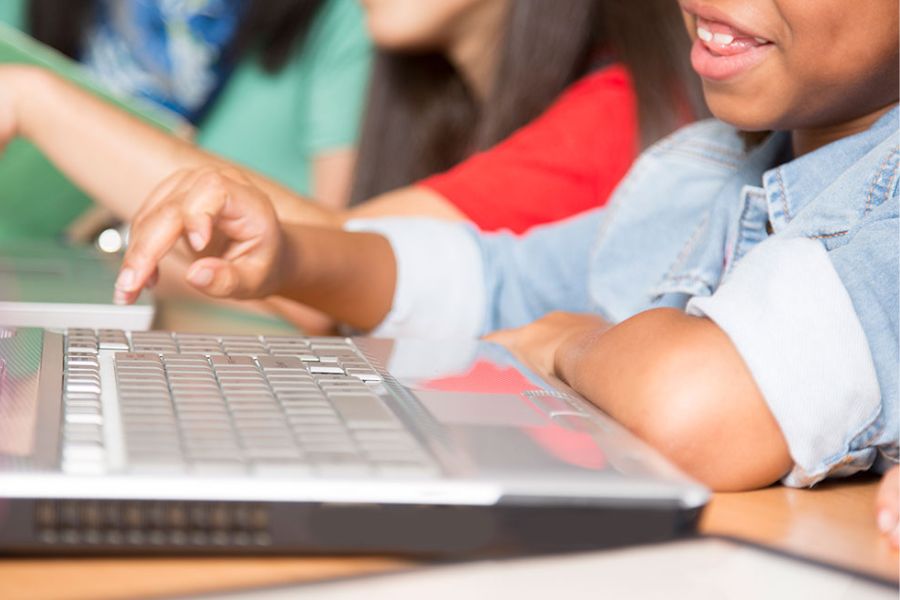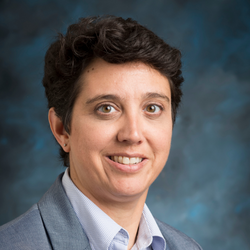
When COVID-19 shut down K-12 schools in March 2020, the sudden and unexpected shift to online teaching came with both challenges and growing pains for most educators. But for schools that had been partnering with the Innovation in Digital Education and Leadership (iDEAL) Institute at LMU School of Education, the transition was far easier.
Since its establishment in 2015, the iDEAL Institute has been dedicated to seamlessly integrating technology to benefit all students. By the time the pandemic placed an indefinite pause on face-to-face instruction, iDEAL had already spent five years developing best practices for blended learning and remote, hybrid, and technology-enabled instruction—as well as providing professional development to educators in more than a dozen partner schools.

“When COVID hit, the schools that had been partnering with us were able to switch to online teaching in very little time,” says Shannon Tabaldo, Ed.D. ’23, founding executive director of the iDEAL Institute. “They had tools and a skill set others lacked, and with just a couple of consultations with our team, they quickly made the transition.”
At a time of turmoil, iDEAL was well-positioned to assist in addressing the urgent needs of schools, many of which began consulting with the institute for the first time. Tabaldo and her colleagues scheduled more than a dozen workshops in the pandemic’s earliest days to train teachers in the basics of the technology and best practices for remote instruction. “It was all-hands-on-deck, getting schools up and running and then providing professional development for the next 18 months or so while the school sites were closed,” says Tabaldo. She estimates that iDEAL consulted with more than 100 schools during the pandemic, in addition to working on a regular basis with the institute’s 40 current contracted partners.
With software vendors providing teachers so many free products and resources at the start of the pandemic, many looked to Tabaldo’s team to help sort through the tools and develop grade-appropriate templates. The institute built out web pages that provided basic information and subject-specific resource lists for teachers, parents and administrators. Adapting its pre-COVID professional development, iDEAL’s experts offered training in instructional design for the virtual classroom.
One of the strategies emphasized by iDEAL was the use of virtual choice boards, wherein teachers created a Google doc or slide deck that was sent out at the beginning of each day or week, depending on the subject area, providing the students with the information they needed to engage in offline learning. “It was important for teachers not to have kids online all day, because no one wants to sit on Zoom for that long,” Tabaldo says. “The technology can be used to flip the classroom—with teachers creating short videos and setting up templates that are pushed out to their Google Classrooms, and the kids using their Chromebooks to do something that doesn’t involve listening to a lecture.”
Tabaldo notes that the return of in-person instruction shouldn’t mean the end of choice boards and other innovations that proved beneficial during the pandemic. “We don’t want teachers to say, ‘Now we’re going to have no technology because we had so much for 18 months,’” she says. “What we are promoting now is the balanced, intentional use of technology for student learning.”
For all of the growing pains, Tabaldo points out that the COVID era has substantially raised educators’ baseline technological skills. “Today when we do professional development, teachers have a basic understanding that many lacked three years ago. They also have the confidence that if they haven’t done something before, they can learn it,” she says. “That means we can turn our focus to using the tech in ways that will maximize the impact on student learning.”
Students, too, have changed in their orientation to technology during the course of the pandemic, accelerating a trend that was already well underway. “Kids were never afraid to try new things or learn new tech,” Tabaldo says. “What’s grown exponentially is that they want to obtain information digitally, and they want it quickly. Even more than before, teachers are no longer the keepers of information, but instead facilitators of learning. And with kids consuming information in 30-second increments on TikTok, educators increasingly need to be ‘edutainers.’ We advise teachers to overplan, giving their students lots of choices and autonomy so they don’t get bored. Students use the technology to fill in learning gaps, and then teachers can slow them down and engage them in meaningful conversations without the devices.”
Not surprisingly, the COVID era has also led to substantial changes in iDEAL’s activities. Prior to the pandemic, Tabaldo notes, all of the institute’s workshops were conducted in person. Today, the majority of iDEAL’s professional development is virtual, which has expanded the trainings well beyond the Southern California region, including to districts in other states. As of the 2023-24 academic year, iDEAL has reached more than 1,000 educators in 78 public, charter, and Catholic schools, not counting its many informal consultations.
The fruits of the institute’s trainings were showcased at the inaugural BlendED 2023 teacher mini-conference on November 8, where iDEAL’s community of educators came together to share their experiences and insights. As much as anything, Tabaldo says, BlendED was an opportunity to celebrate the strides these individuals have made.
Tabaldo notes that new technologies will continue to raise new issues and questions. Increasingly, educators are asking about the pros and cons of artificial intelligence in the classroom. The iDEAL Institute is currently involved in research and exploration of how AI can impact instruction and learning, in conjunction with other LMU experts and university leaders.
iDEAL’s expanded efforts during the pandemic have also included support for the teacher candidates within the School of Education. Under the leadership of iDEAL associate director Greg Akai, Ed.D., the institute developed “Foundations of Online Teaching and Learning,” a course now taken by all SOE students pursuing a teaching credential. “We want everyone graduating from teacher preparation programs to have this skill set,” Tabaldo says, “because the biggest lesson from the COVID era is that we will never go back to not having technology in our classrooms.”